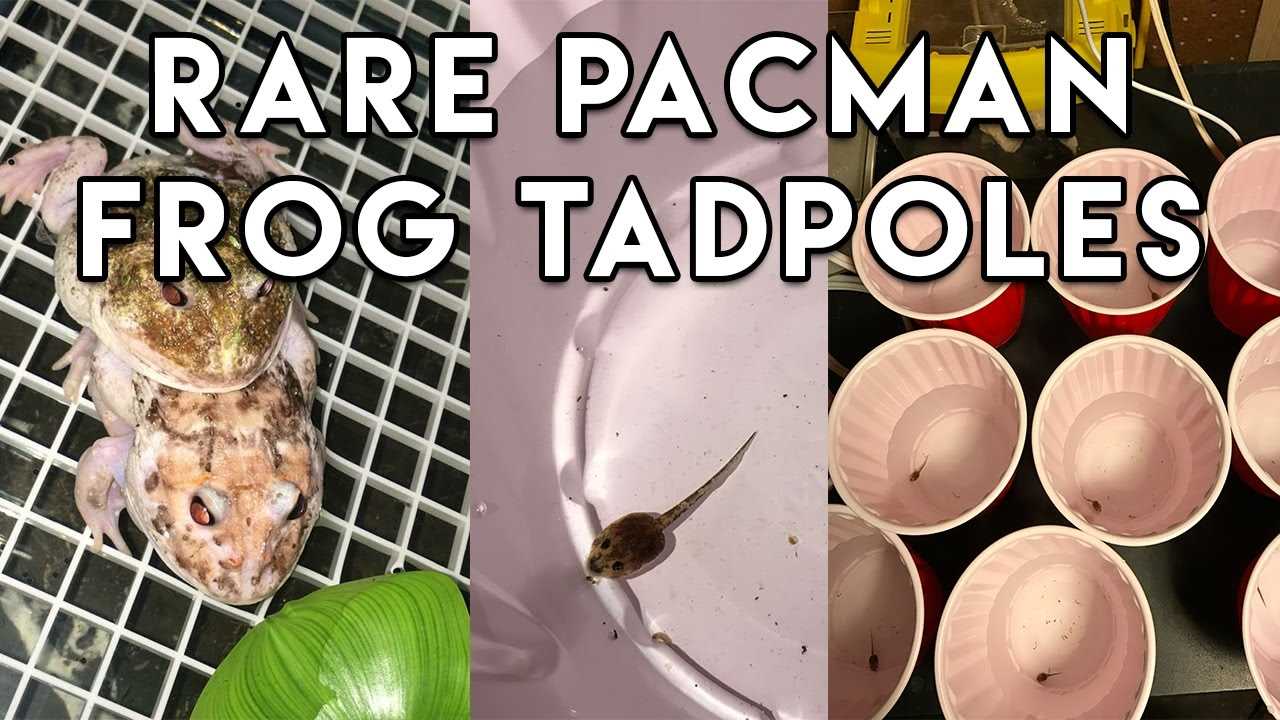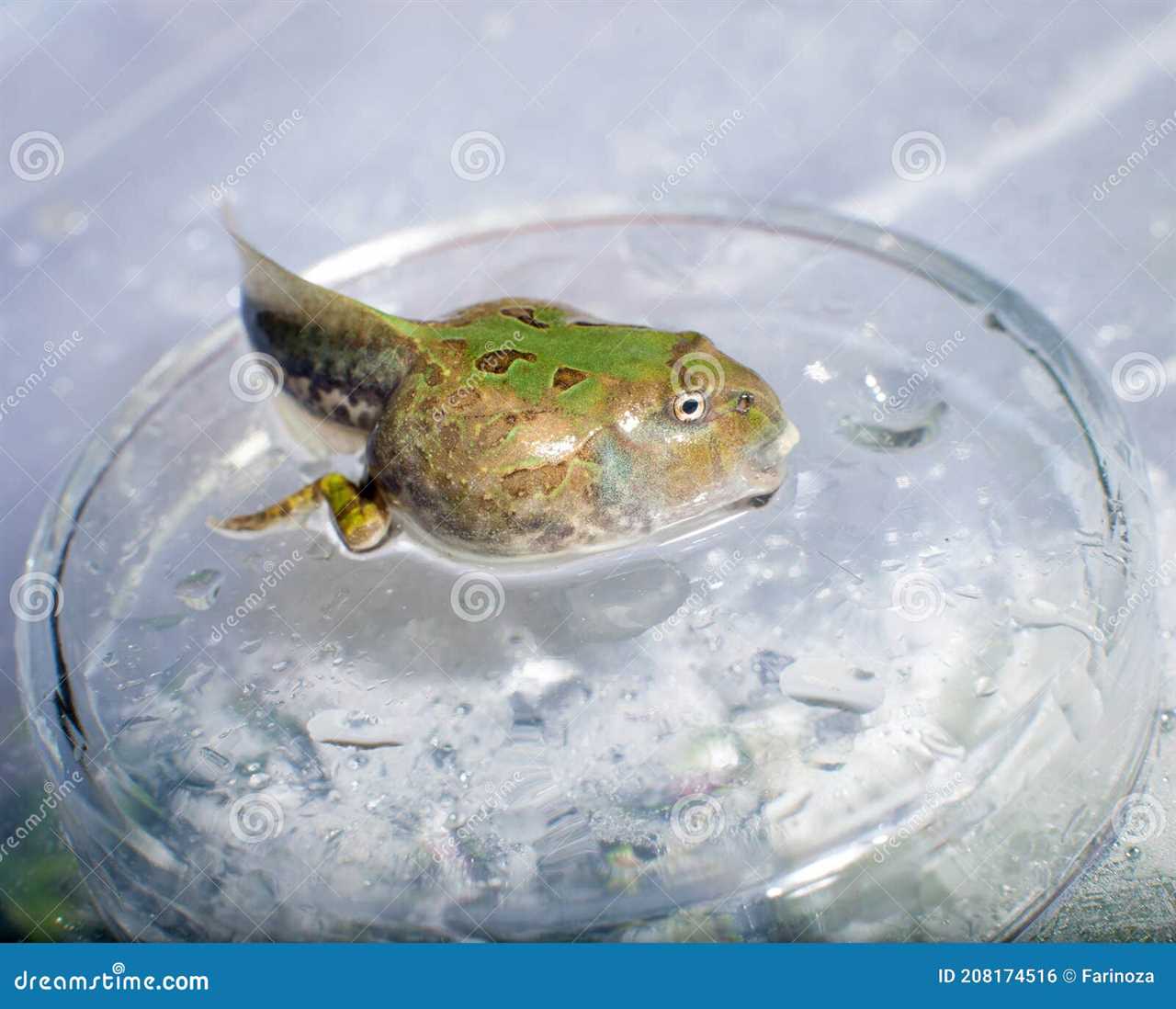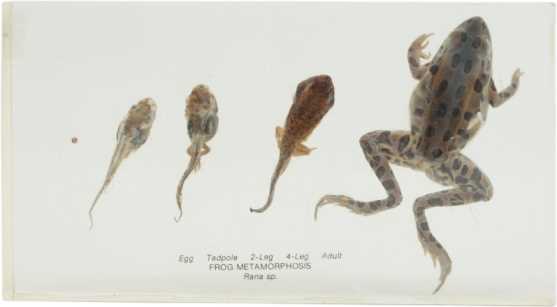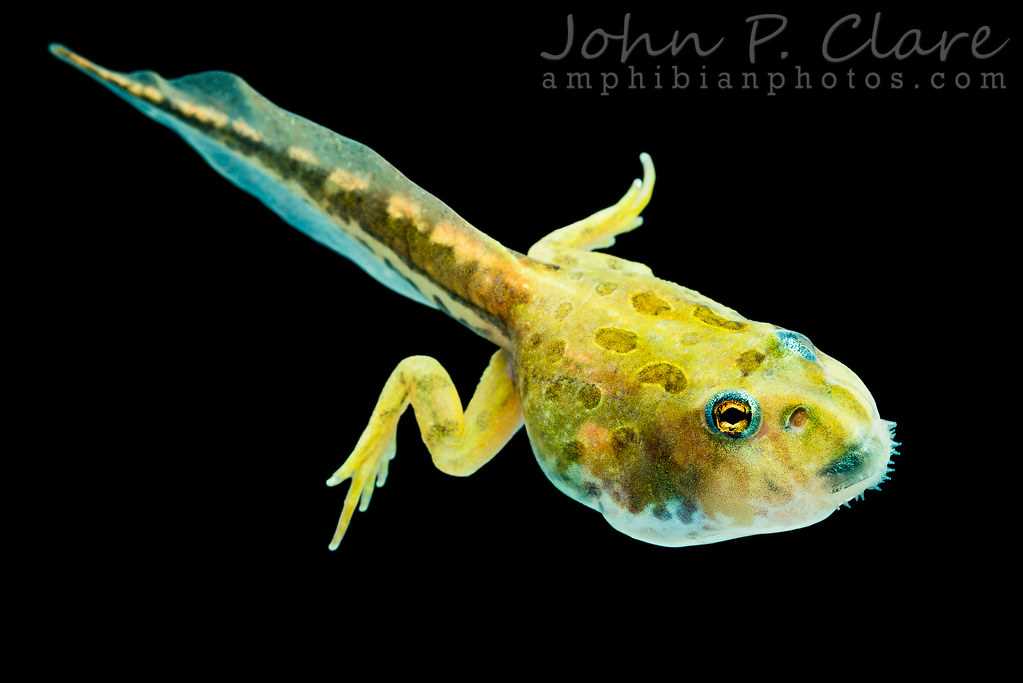
Unlike other frog species, the Pac Man frog tadpole has a distinct appearance that sets it apart. With its round body and wide mouth, reminiscent of the popular video game character Pac Man, this larvae stage of the frog’s life showcases its extraordinary features. As it swims through the pond, the tadpole’s powerful mouth enables it to devour anything in its path, including small insects and other aquatic creatures.
The transition from tadpole to adult Pac Man frog is truly remarkable. During this process of metamorphosis, the fully formed frog emerges from the water and begins its new life on land. With its vibrant colors and strong limbs, the Pac Man frog is ready to tackle the world outside the pond.
The Life Cycle of a Pac Man Frog
The life cycle of a Pac Man frog is a fascinating process that involves metamorphosis, a crucial stage in the development of an amphibian. From a tiny egg to a fully grown frog, the Pac Man frog goes through several stages, each with its unique characteristics and requirements.
Egg Stage
It all begins with the laying of eggs by the female Pac Man frog. These eggs are usually laid in a moist environment, such as a pond or marshland. The eggs are gelatinous and are often grouped together in clusters. The female Pac Man frog ensures that the eggs are well protected and hidden from potential predators.
Tadpole Stage
During this stage, the tadpoles go through various developmental changes. Their bodies gradually transform, and their hind legs start to grow. They also develop lungs, allowing them to breathe air when they come to the water’s surface. This marks the beginning of their transition from an aquatic life to a semi-aquatic one.
Metamorphosis
Metamorphosis is a crucial stage in the life cycle of a Pac Man frog. During this process, the tadpole undergoes a series of remarkable changes and transforms into a frog. The hind legs continue to develop, and the front legs emerge. The tail shrinks and eventually disappears, while the body undergoes various structural modifications to adapt to a terrestrial lifestyle.
The fully developed Pac Man frog then leaves the water and becomes a land-dwelling amphibian. At this point, it starts to feed on insects and other small prey that it can capture with its sticky tongue.
The entire process of metamorphosis, from tadpole to frog, can take several weeks to months, depending on environmental conditions and species-specific factors.
All You Need to Know About Pac Man Frog Tadpoles
The Early Stages of Development: From Egg to Tadpole
The life of a Pac Man frog begins as an egg, which is typically laid in a body of water, such as a pond or a small water-filled depression. The eggs are attached to vegetation or other supportive surfaces to prevent them from floating away.
After a few days, the eggs hatch into tadpoles, which are essentially the larvae of Pac Man frogs. At this stage, tadpoles have gills for breathing and a long, slender body that helps them swim efficiently in the water. They also possess a small tail that aids in propulsion.
Metamorphosis: The Transformation from Tadpole to Frog
As Pac Man frog tadpoles continue to grow, they eventually reach a stage where they undergo metamorphosis. During this process, the tadpole’s body undergoes dramatic changes as it transitions into a frog.
One of the most noticeable changes is the development of hind limbs, which allows the tadpole to start navigating land. The tadpole also gradually loses its gills and develops lungs, preparing for a life outside of the water.
During this period, the tadpole experiences a full-body transformation. Its tail reduces in size and eventually disappears as it becomes a fully-formed frog. The skin undergoes changes as well, developing a tougher texture that protects the frog from drying out and other environmental factors.
The Fascinating Journey of Pac Man Frog Tadpoles
Next time you come across a pond or body of water, take a moment to appreciate the intricacies of the Pac Man frog tadpole’s journey. It is a testament to the wonders of nature and the incredible transformations that occur within the animal kingdom.
Metamorphosis: The Transformation from Tadpole to Frog
The metamorphosis of a Pac Man Frog tadpole is an incredible process that marks the transition from their aquatic larval stage to becoming a fully developed terrestrial frog. This transformation is a vital part of their life cycle and is essential for their survival as amphibians.
During this metamorphosis, the tadpole undergoes various physiological and physical changes. One of the first noticeable changes is the development of hind limbs, followed by the growth of front limbs. These limbs enable the tadpole to move from their initial aquatic habitat to a terrestrial environment.
Simultaneously, the tail, which was initially long and muscular for swimming, starts to shrink and eventually disappears. This allows the tadpole to adapt to a land-based lifestyle and rely on their newly developed limbs for movement.
The transition from an aquatic lifestyle to a terrestrial one also requires changes in the tadpole’s diet. While tadpoles primarily feed on plant matter and algae, frogs are carnivorous and feed on insects, small invertebrates, and even other smaller frogs. This dietary transition is facilitated by the development of a true mouth, teeth, and a specialized digestive system.
Aquatic Lifestyle: Diet and Feeding Habits of Pac Man Frog Tadpoles
The aquatic lifestyle of Pac Man frog tadpoles plays a crucial role in their growth and development. As larvae, these amphibians rely on their environment, particularly the pond or water body they inhabit, to obtain the necessary nutrients for their survival.
The diet of Pac Man frog tadpoles primarily consists of small aquatic organisms, such as insects, small fish, and crustaceans. These larvae are voracious eaters and will consume almost anything they can catch and fit into their mouths.
One of the fascinating aspects of Pac Man frog tadpole feeding habits is their ability to use suction to capture prey. These larvae have a specialized mouth structure that allows them to create a vacuum-like effect to draw in their food. By rapidly expanding and contracting their mouths, they can create a powerful suction force, sucking in their prey within seconds.
Another interesting fact about Pac Man frog tadpoles is their capability to detect movement and vibrations in the water. This sense helps them locate and capture their prey more efficiently. Once the tadpole detects a potential food source, it will quickly swim towards it and engulf it using its powerful suction technique.
Metamorphosis, the process of transformation from tadpole to frog, is a significant milestone in the life cycle of Pac Man frogs. During this stage, the tadpole’s diet changes as its body undergoes a remarkable transformation. As it gradually develops limbs and lungs, it begins the process of transitioning from an aquatic lifestyle to a terrestrial one.
Habitat and Environment for Pac Man Frog Tadpoles
The habitat and environment play a crucial role in the development of Pac Man frog tadpoles. These tadpoles are aquatic creatures that spend their early stages of life in ponds or other freshwater bodies.
Ponds: Pac Man frog tadpoles are commonly found in ponds, where they hatch from eggs laid by adult frogs. Ponds provide a suitable environment for tadpoles to grow and develop. The water in the pond is usually calm and still, which allows the tadpoles to swim freely.
Tadpoles: As larvae, Pac Man frog tadpoles have gills that help them breathe underwater. They have long and slender bodies with a tail that aids in swimming. Tadpoles also have a mouth that they use to feed on various organic matter, including algae and small plant debris.
Aquatic Environment: To create a suitable habitat for Pac Man frog tadpoles, it is essential to maintain a clean and well-oxygenated aquatic environment. Regular water changes and filtration systems can help keep the water quality optimal for the tadpoles’ growth.
Feeding: Pac Man frog tadpoles are primarily herbivorous and feed on algae, plant matter, and small organisms present in the water. Providing them with a varied and balanced diet is crucial for their healthy growth. Commercial tadpole food or finely crushed fish flakes can be offered to ensure they receive all the necessary nutrients.
Predators and Threats to Pac Man Frog Tadpoles
One of the main predators of Pac Man frog tadpoles is other aquatic animals, such as fish and larger amphibians. These predators will feed on the tadpoles if given the opportunity, making it important to provide a safe and secure habitat for them.
Another threat to Pac Man frog tadpoles is pollution in the water. Any chemicals or contaminants in their environment can affect the health and development of the tadpoles, potentially leading to deformities or death.
The habitat in which Pac Man frog tadpoles reside also plays a significant role in their survival. Tadpoles need access to clean and freshwater ponds or bodies of water with suitable vegetation and hiding spots. Without these essential components, their chances of survival decrease.
Additionally, tadpoles require a proper balance of nutrients in their diet to grow and develop. If they do not receive an adequate food source, their growth may be stunted, making them more susceptible to predation and other threats.
Tips for Caring for Pac Man Frog Tadpoles at Home

Keeping pac man frog tadpoles as pets can be a fascinating and rewarding experience. These aquatic larvae go through an incredible transformation called metamorphosis, turning into the iconic pac man frogs that we all know and love. If you’re thinking about raising pac man frog tadpoles at home, here are some essential tips for their care:
1. Setting Up the Habitat
Before bringing home pac man frog tadpoles, you need to set up a suitable habitat for them. A small-sized aquatic pond or a sturdy glass tank with a secure lid will work. Fill the container with dechlorinated water to an appropriate depth, ensuring that the tadpoles have enough space to swim around.
2. Temperature and Lighting
Pac man frog tadpoles require a warm and well-lit environment to thrive. Maintain the water temperature between 72-78°F (22-26°C) using an aquarium heater. Place a heat lamp or UVB light above the tank to provide necessary lighting, as well as simulate their natural habitat conditions.
3. Feeding Schedule
Tadpoles are voracious eaters, and pac man frogs are no exception. Feed them a diet primarily consisting of high-quality commercial tadpole food pellets. You can also supplement their diet with small live or frozen foods like bloodworms and brine shrimp. Offer food once or twice a day, making sure to remove any uneaten food to maintain water quality.
4. Water Quality
Keeping the water clean and maintaining good water quality is crucial for the health and development of pac man frog tadpoles. Regularly test the water parameters using a reliable water testing kit and perform partial water changes as needed. Avoid using tap water directly and make sure to treat it with a dechlorinator to remove harmful chemicals.
5. Add Hiding Places
Pac man frog tadpoles appreciate having places to hide and take shelter. Add some aquatic plants or floating objects like PVC pipes or small caves to provide them with suitable hiding spots. This will help reduce stress and give them a sense of security in their environment.
6. Avoid Overcrowding

Make sure not to overcrowd the habitat with too many tadpoles. Overcrowding can lead to poor water quality and stress, which can affect the overall health of the tadpoles. Provide enough space for each tadpole to swim and grow comfortably.
7. Monitor Development


I’m Lena Adams—a product of an unconventional upbringing in the African wilderness. My father, a daring explorer of African wildlife, sparked my fascination with reptiles, a passion that intertwined with the tragic loss of my mother during an expedition, leaving an indelible mark on my life. Driven to understand the creatures that captivated my parents, I embarked on my journey, sharing insights about reptiles, frogs, and lizards on my website. Through my explorations and conservation efforts, I honour my family’s legacy while seeking connections—to the creatures, nature, and the mother whose presence I yearn to understand.
